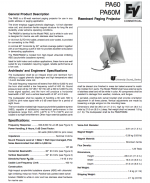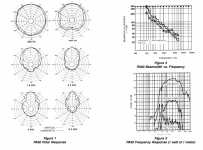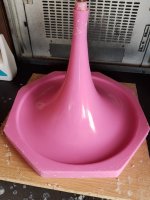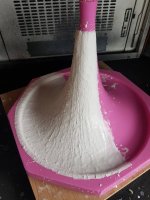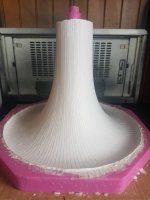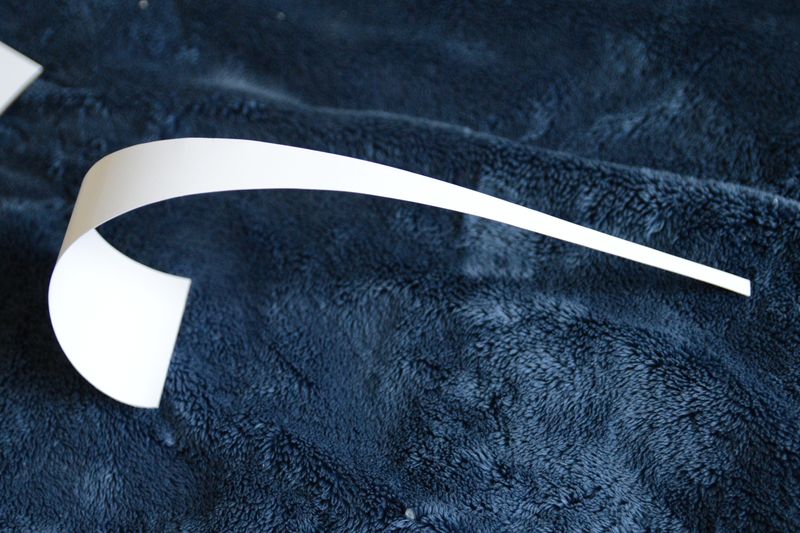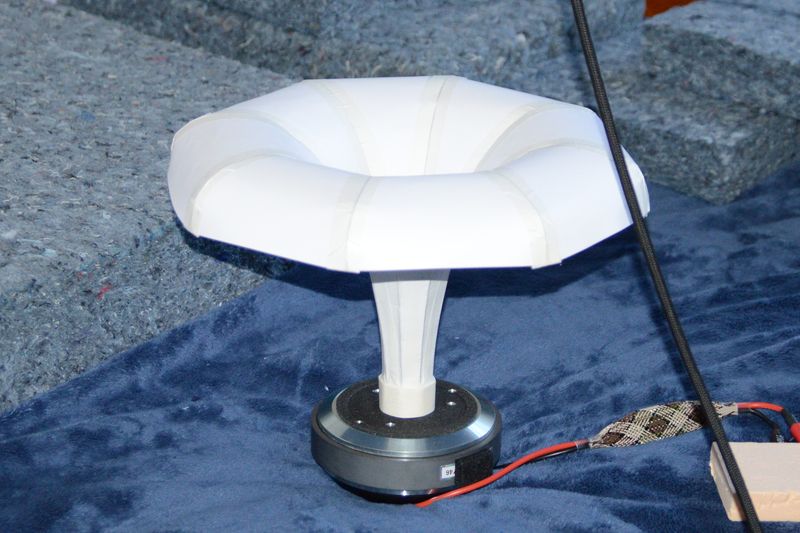Yes, but whitout the odd blue lights, the shiny chrome ring and probably with a more elaborated strucural paper pattern tangle and a diferent paper quality, and finally also a damping thick deposit on the outside. <snip>
That's a pretty intimate listening space, may be too tight for horns with compression drivers?
Have you considered a dome or ring radiator in a large waveguide?
I can image you have some reflections from the wall behind your seat.
There's very little space between your left and right speaker which might cause some cancellation.
A small synergy would be appropriate > listening to, or "in" giant headphones
Last edited:
To me, this forum has always been a big community in which there is one mutual interest: a passion for audio.
There is a lot of expertise being shared and a lot to be learned, especially from very knowledgable people like Dr. Geddes.
Having said that, it appears some misconceptions are in order regarding my earlier post. So I might as well put things straight.
First off: The intention of my post was to give an example of how your work might have been exploited by JBL Marketeers and not to think in absolutes.
My statements were not intended as academic comments to dispute your research (Waveguide Theory), and definately not specific(ally valid) to all cases, all high frequency drivers, etc.
After all, this is a DIY forum and not a scientific review board .
.
In fact, most of my statements are based on comments from the "Geddes on waveguides" thread, that I have read more than once, as with your book and other publications.
My first sentence: "the effectiveness of an OS waveguide is subject to specific conditions", doesn't imply you can't use an OS waveguide with all kinds of high frequency drivers, but in order to make it work properly some design considerations have to be taken into account.
Or would you disagree?
I didn't mean to imply the wavefront from dome tweeters are TRULY spherical (domes are edge-driven), nor did I mention that domes move radially (they move axially). Many different kinds of tweeters exist (hemispherical, flattened dome, ring radiator, ring shaped membrane etc.) and how they radiate is the product of even more variables (suspension characteristics, material of which the diaphragm is made, coating etc.). To my knowledge the consensus is: an average dome tweeter does produce a wave front that's an approximation of a spherical wave.
Some research on dome tweeters has been done by using interferometry. I may post about it in another thread.
According to the Japanese Scientists that published this AES paper, I am not alone:
"Conventionally, a dome speaker is mounted on a flat baffle, such that the sound waves radiating from the diaphragm are subject to reflection, interference and diffraction, resulting in irregular response characteristics. Noting that a dome shaped diaphragm's wavefront is nearly spherical, we decided to use a horn to spread the wavefront without distorting it."
Below are some quotes from your thread regarding JBL's EOS waveguides (and these were the comments I was inexplicitly referring to) :
Question:
"JBL has elliptical OS WG on it's cheaper studio monitors.
BTW, I'm not knocking this speaker, just giving an impression of what I heard."
__________________
Dr. Geddes:
"There is no similarity between that speaker and what I do except the rip-off of the use of the term "Oblate-Spheriodal"
EOS is a trade name, not a real thing, There is no "Elliptical Oblate Spheriodal" coordinate system. JBL made it up. And they didn't acknowledge where the ideal came from.
The Oblate Spheriodal Coordinate system is not something that I did. It is one of the eleven coordinate system in which the wave equation is seperable, i.e. solvable as seperate functions in each coordiante direction. The EOS as you and JBL have defined IS NOT one of the 11 coordinate systems and as such there is no wave propagation that does not couple all there coordinates. Is this a bad thing? Hard to tell. It does mean that you cannot solve the equations analytically, nor can you prove that it has a minimum of HOM generation.
The OS waveguide was never patented. Curiously enough, it was licesensed by JBL way back when I used to work with John Eargle. They had an option on the rights by paying for the patent proscecusion. Through a long involved mistake, they backed out and I dropped the application, so it was never issued."
Question:
"So what you are saying Dr. Geddes is that JBL is just referring to the shape of the mouth?"
Dr. Geddes:
"They coined a term that sounded good. It doesn't have to mean anything"
I hope this puts my earlier post a different light. Let us not quibble about trivial details.
By the way:
Speaking of waveguides for tweeters, your knowledge and experience might be beneficial to this thread.
There is a lot of expertise being shared and a lot to be learned, especially from very knowledgable people like Dr. Geddes.
Having said that, it appears some misconceptions are in order regarding my earlier post. So I might as well put things straight.
First off: The intention of my post was to give an example of how your work might have been exploited by JBL Marketeers and not to think in absolutes.
My statements were not intended as academic comments to dispute your research (Waveguide Theory), and definately not specific(ally valid) to all cases, all high frequency drivers, etc.
After all, this is a DIY forum and not a scientific review board
In fact, most of my statements are based on comments from the "Geddes on waveguides" thread, that I have read more than once, as with your book and other publications.
My first sentence: "the effectiveness of an OS waveguide is subject to specific conditions", doesn't imply you can't use an OS waveguide with all kinds of high frequency drivers, but in order to make it work properly some design considerations have to be taken into account.
Or would you disagree?
By the way "dome tweeters (spherical wavefronts)" is also incorrect, as the wavefront from a dome is not truly spherical because the dome moves axially not radially as you imply.
I didn't mean to imply the wavefront from dome tweeters are TRULY spherical (domes are edge-driven), nor did I mention that domes move radially (they move axially). Many different kinds of tweeters exist (hemispherical, flattened dome, ring radiator, ring shaped membrane etc.) and how they radiate is the product of even more variables (suspension characteristics, material of which the diaphragm is made, coating etc.). To my knowledge the consensus is: an average dome tweeter does produce a wave front that's an approximation of a spherical wave.
Some research on dome tweeters has been done by using interferometry. I may post about it in another thread.
According to the Japanese Scientists that published this AES paper, I am not alone:
"Conventionally, a dome speaker is mounted on a flat baffle, such that the sound waves radiating from the diaphragm are subject to reflection, interference and diffraction, resulting in irregular response characteristics. Noting that a dome shaped diaphragm's wavefront is nearly spherical, we decided to use a horn to spread the wavefront without distorting it."
Below are some quotes from your thread regarding JBL's EOS waveguides (and these were the comments I was inexplicitly referring to) :
Question:
"JBL has elliptical OS WG on it's cheaper studio monitors.
BTW, I'm not knocking this speaker, just giving an impression of what I heard."
__________________
Dr. Geddes:
"There is no similarity between that speaker and what I do except the rip-off of the use of the term "Oblate-Spheriodal"
EOS is a trade name, not a real thing, There is no "Elliptical Oblate Spheriodal" coordinate system. JBL made it up. And they didn't acknowledge where the ideal came from.
The Oblate Spheriodal Coordinate system is not something that I did. It is one of the eleven coordinate system in which the wave equation is seperable, i.e. solvable as seperate functions in each coordiante direction. The EOS as you and JBL have defined IS NOT one of the 11 coordinate systems and as such there is no wave propagation that does not couple all there coordinates. Is this a bad thing? Hard to tell. It does mean that you cannot solve the equations analytically, nor can you prove that it has a minimum of HOM generation.
The OS waveguide was never patented. Curiously enough, it was licesensed by JBL way back when I used to work with John Eargle. They had an option on the rights by paying for the patent proscecusion. Through a long involved mistake, they backed out and I dropped the application, so it was never issued."
Question:
"So what you are saying Dr. Geddes is that JBL is just referring to the shape of the mouth?"
Dr. Geddes:
"They coined a term that sounded good. It doesn't have to mean anything"
I hope this puts my earlier post a different light. Let us not quibble about trivial details.
By the way:
Speaking of waveguides for tweeters, your knowledge and experience might be beneficial to this thread.
Last edited:
That's a pretty intimate listening space, may be too tight for horns with compression drivers?
Have you considered a dome or ring radiator in a large waveguide?
I can image you have some reflections from the wall behind your seat.
There's very little space between your left and right speaker which might cause some cancellation.
A small synergy would be appropriate > listening to, or "in" giant headphones
I don't understand the room size objection, i've tested all direct radiator confgurations, the SS is better even with the mantaray horns in vertical position.
I'm a little puzzled by the smoothness of the DE250, it sounds utterly more refined than a lot of hi-fi units (it is a PA device, but i'm not really disapointed to have read Gedlee).
The space behind me is very diffractive (ojects) and the space between the two loudspeakers is critically maximum even for a direct radiator as you can see :
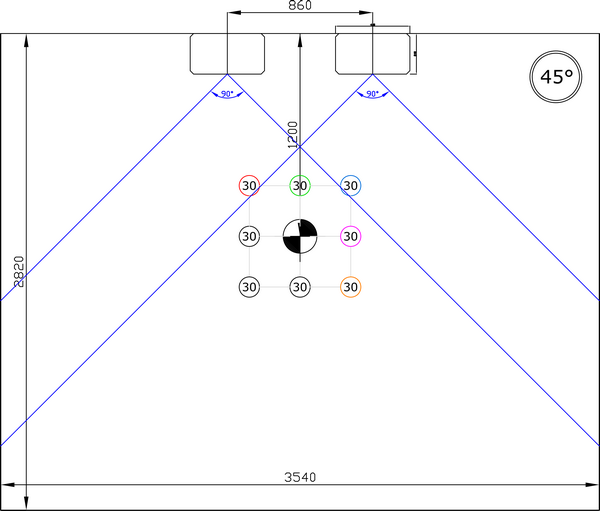
The 860mm can't be augmented at all since the satellites have 240mm of thickness, an unity horn will be too thick and will lower even more the spacing between the emissive devices.
Last edited:
There is no objection here, just observation 
The DE250, which I don't own, is indeed highly regarded, albeit a little rolled off on top.
Last last week I had a conversation with a pro audio dealer and he rated the the DE250 above most other drivers for domestic use, even the more expensive ones.
The DE250, which I don't own, is indeed highly regarded, albeit a little rolled off on top.
Last last week I had a conversation with a pro audio dealer and he rated the the DE250 above most other drivers for domestic use, even the more expensive ones.
The 860mm can't be augmented at all since the satellites have 240mm of thickness, an unity horn will be too thick and will lower even more the spacing between the emissive devices.
With a (fullrange) Unity or Synergy spacing isn't an issue, they could be stacked without cancellation or (serious) lobing issues.
That's the big benefit of it's point source nature.

Last edited:
That would very much depend on your design targets > bandwith, coverage angle etc.
For a start: have a look at Bill's projects (BWaslo) here and here. He has got something cool in the works, so you might want to keep an eye on his posts.
For tons of info on the Unity/Synergy concept, this huge thread is a must-read.
There are many other threads (from P. Bateman a.o.) on synergies; "seek and ye shall find."
For a start: have a look at Bill's projects (BWaslo) here and here. He has got something cool in the works, so you might want to keep an eye on his posts.
For tons of info on the Unity/Synergy concept, this huge thread is a must-read.
There are many other threads (from P. Bateman a.o.) on synergies; "seek and ye shall find."
Last edited:
Excuse me but, i've perhaps not precised as much as necessary my main objective with my high efficiency design.
I'm seaching for the highest speech intelligibility at the lowest sound level possible in a restriced area.
Synergy designs are large and have a low efficiency.
I'm seaching for the highest speech intelligibility at the lowest sound level possible in a restriced area.
Synergy designs are large and have a low efficiency.
Last edited:
If you want excellent speech intelligibility at the lowest sound level possible, in other words a narrow and controlled coverage pattern, something like the EV PA 60 is an excellent choice for a very small package.I'm seaching for the highest speech intelligibility at the lowest sound level possible in a restriced area.
Synergy designs are large and have a low efficiency.
107 dB in around 1/3 cubic foot!
Attachments
Last edited:
absolutely agree.They don't necessarily have to be large, but with your objectives in mind, they're probably not the best option. Moreover, synergies are not the easiest loudspeaker systems to build. It's a very interesting concept nonetheless.
I hate the aesthetics of the re-entrant horns speakers, i'm seriously doubting of the sound quality provided by this thing.If you want excellent speech intelligibility at the lowest sound level possible, in other words a narrow and controlled coverage pattern, something like the EV PA 60 is an excellent choice for a very small package.
107 dB in around 1/3 cubic foot!
Moreover the frequency range is very resticted, it will terribly harm the tonal equilibrium of some non standardized voices.
You said you were looking for "the highest speech intelligibility", didn't mention "aesthetics" or "sound quality", two very different parametersI hate the aesthetics of the re-entrant horns speakers, i'm seriously doubting of the sound quality provided by this thing.
Moreover the frequency range is very resticted, it will terribly harm the tonal equilibrium of some non standardized voices.
Best of luck in your search!
Thanks, i'm using all my knowledge and energy at simplifiying the paper mache process in order to make all the existing horns for few bucks.
DIY Paper Mache Horn - The Paper Horn by Inlow Sound
My last horn (this morning) jump by itself from the mold at the end of the drying process (without any chemical product) and each prototype overall is cost less than 5€.
The horn is ready to use 12hours after the paper deposit (with takes around one hour) and the mold don't need any finish in order to have a perfectly smooth surface.
Why choose a profile when you can make them all ?
DIY Paper Mache Horn - The Paper Horn by Inlow Sound
My last horn (this morning) jump by itself from the mold at the end of the drying process (without any chemical product) and each prototype overall is cost less than 5€.
The horn is ready to use 12hours after the paper deposit (with takes around one hour) and the mold don't need any finish in order to have a perfectly smooth surface.
Why choose a profile when you can make them all ?
I've also been making paper horns.
Paper mache horns. - DIY Audio Projects - StereoNET
Paper machè horns.
What is your process?
Paper mache horns. - DIY Audio Projects - StereoNET
Paper machè horns.
What is your process?
I put a nylon stocking and a balloon on the raw plaster mold, the finish is perfectly gloss and the horn jump by itself of the mold when you cut the nylon stocking.
Then the solid paraffin coating is fast, it allows to do the entire process within 24 hours.
Disclaimer : this is not (only) a joke, i've also used fast PVA glue (+20% of distilled water), it don't adhere on the ballon surface.
Then the solid paraffin coating is fast, it allows to do the entire process within 24 hours.
Disclaimer : this is not (only) a joke, i've also used fast PVA glue (+20% of distilled water), it don't adhere on the ballon surface.
Disclaimer : this is not (only) a joke, i've also used fast PVA glue (+20% of distilled water), it don't adhere on the ballon surface.
Until the plaster molds are dry, you can exercise yourself on a Champagne Jeroboam (3 Liters, you should not drink it all at once because you will suffer from uncontrollable eructations)
You can click on the photos in order to see the details.
The nylon stocking and a balloon on the bottle
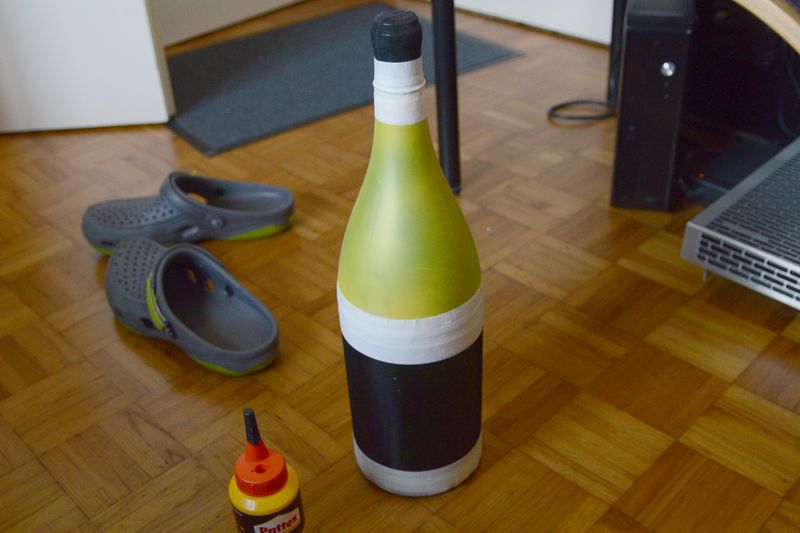
The paper deposited
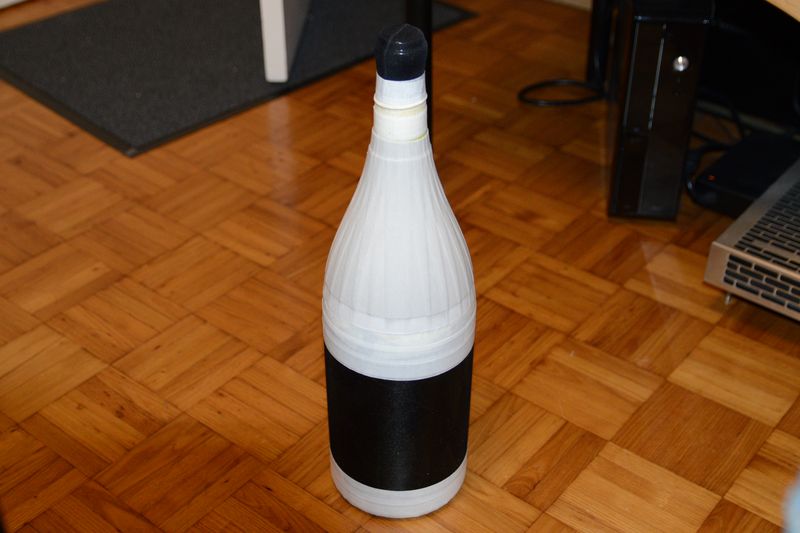
My horn is 550hz LeCleach. Unfortunately a balloon wouldn't fit. You have a very good idea. How many layers do you use?
Four layers gives me around 1mm of thickness, after that i put a hot layer of parrafin on the outside (around 2-3mm)... 0.1€
You need to glue the balloon on the mold with some liquid latex for the LeCleach profile
Your technique is quite impressive and your mold is beautiful, for my project i try to stay under 5€ (grand total cost for each horn)
Last edited:
- Home
- Loudspeakers
- Multi-Way
- How to Make a New Wave Biradial Horn
